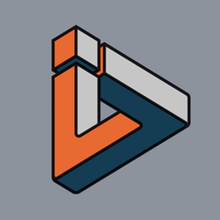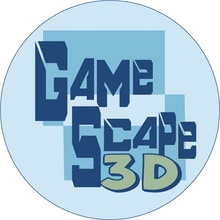You have your 3D printers setup and whilst printing, your kids just stare in awe whilst it does it thing. (As do we no doubt!) EasyThreeD has produced an out of the box, compact 3D printer aimed at the younger audience. They have called it the Nano.
The Packaging
Now, this is where EasyThreeD can improve upon. Upon receiving my unit, it was shipped in a plain cardboard box with no branding at all. If I was a child receiving this as a gift, I’d be pretty disappointed. Aesthetics aside, the packing of the printer was good. It was securely wrapped in bubble wrap and the axis had some clips to hold them in place. Also contained, was a small white box which contained the following:
- PLA filament
- Plastic scraper
- Screwdriver
- USB SD Card reader
- USB cable
- Instructions
- 3D printed spool holder.
This was neatly put inside the printer itself, along with the power supply.
The Printer
The EasyThreeD Nano is a very compact printer and weighs just 1kg. This makes it easy to carry around with you. It is bottom heavy, which in a way is good as it keeps it stable, and with rubber feet absorbs any vibrations with ease. There are 4 clear window panels around the printer which are detachable.
Do these serve any purpose? They can keep little fingers out the way of the extruder and avoid any drafts but I think that’s about it. The clips can be quite tight to clip back on when putting the panels back on.
The rear of the printer has the sockets for the power and USB cable. There is also a small switch for the extruder motor and also the Micro SD card slot. From the pic below, you can see the cable does get in the slightest way of the SD card slot. So personally, I think the SD slot would be better suited at the front of the unit for ease of access.
The front of the printer is really simple, it has the EasyThreeD logo and 1 button which is used to start the print. When printing, it has a green light.
Now onto the inside…
The EasyThreeD Nano comes with a flexible magnetic removable build plate. This is a good thing, however, the build plate is quite thick and is tricky to remove. This is due to it sitting in a recessed metal plate and you need to try and get the corner up in order to remove it, and even once you have a hold, the magnetic force is strong on this one! The build size is 90mm x 110mm x 110mm.
Now, as this is meant to be a printer aimed for kids, they will most definitely find it difficult to do this, so adult help will be required! The adhesion to the bed is great, especially as this is a non-heated bed and removing prints is easy.
The extruder is enclosed in plastic housing right down to the nozzle, so it protects your fingers from the heat. The nozzle is a 0.4mm nozzle and this can be replaced, however, you won’t be able to use your standard nozzle. See below on how you can replace the nozzle.
It does have a small silicone sock on it though to help avoid heat creep. The PTFE tube is very short and sticks out the top so is more or less a direct drive! I did successfully print TPU with this believe it or not!
There is no parts cooling fan, so you may find it a struggle to print models with long bridges. The belts and rods of the printer are small and there is some flex if you wobble the extruder housing.
This shouldn’t affect printing and the printing speed is quite slow! There is also one end stop of which I can see, which is a black plug that sticks up in the corner.
Assembly
There is no assembly of the printer when you get, so here is a video of the assembly for the EasyThreeD Nano from the manufacturer themselves.
Where does the filament go?
The spool holder that comes with the EasyThreeD Nano is actually 3D printed. It is designed to hold the small spool that comes with the printer. You will not be able to fit a 1kg roll on there either, as it is just too small. As the spool holder is mounted of either the left or right side, using a 1kg spool could cause it to tip over. I would suggest to print yourself a desk spool holder if you are using 1kg spools of filament.
Let’s get on to the printing!
Bed leveling
Now, this is a little fiddly! There are 4 screw heads in each corner of the build plate, of which when you turn raises/lowers the bed as needed, There is no auto level, so you need to do this as a print starts, however, therein lies an issue.
As the print head moves around, so does the metal rods its attached to and can get in the way of you turning the screws! Once you have managed to get the bed level, you shouldn’t need to alter again thanks to the removable build surface. It’s the metal tray this sits in you are leveling.
Loading the filament
Insert your desired filament into the PTFE tube at the top and set the switch at the back to feed. Once the nozzle reaches temperature, it will automatically pull the filament through. You will then need to put the switch back to the middle to stop it once the filament is visible. When changing filament, just do the reverse.
Starting a print
The EasyThreeD Nano comes with its own slicer called E3D Nano, which is very easy to install and has its basic functions at the start. You can go advanced and play around with additional settings, but it’s not as in-depth as Cura or Simplify3D. You can use other slicers if you wish as well.
The interface can be difficult to navigate as nothing is labeled. See below…
To load your file into the E3D Nano software, click the top icon. Once loaded, you can move it, flip it, scale it and also put a surface to the floor. The next step is to then slice the file, which is done using the icon to the right. Here, you have a Onekey option or Custom. The bottom icon deletes the STL and the left icon saves as an STL.
Once you have sliced your file, save this to the SD card and this can now be placed into the EasyThreeD Nano! Due to the Nano having no screen or navigation options, it will only print the one file on the card. I have tried with several files on the card and it prints the latest file that is on there.
Onekey operation
With the Onekey operation, you have 3 choices of which I think to speak for themselves.
- Fast
- Standard
- Optimize
Using Custom allows you to change various settings for the print like layer height, walls, infill, etc. Having the Onekey operation is quite handy, but it all depends on the finished product! Here are 3 examples below of prints I have done using these 3 options and changing nothing else.
The Results!
I used the Filament Clip by intofocus from Thingiverse using Anycubics White PLA. A raft is used on each option, which does use more filament but ensures good first layer adhesion at least. Sometimes, adhesion is too good as I found it difficult to remove the print.
As you can see, there may have been a partial clog with the gaps in layers. Overall though, not a bad print. The Nano is very quiet but is also slow. I believe the default speed is set to around 20-30mm/s and I also noticed that it retracts a lot between moves too. This could just be down to the slicing software.
I would need to play around with the settings to get much better prints from the EasythreeD Nano and this is where kids will struggle but as an introduction to 3D printing, I’d say its suitable.
Printing TPU
As the Nano is a direct drive system, I thought I’d give TPU a go and got some good results! I printed just using the standard option, and as this printer is slow, it certainly helps with the TPU.
The first print I did was a tyre for the Open RC F1 car. This came out pretty well! I previously printed these tyres on my CR10S for the Open RC F1 project and the results were pretty much the same, if not slightly worse!
Secondly, I thought I’d give the Benchy a go. There is some room for improvement there for definite, however, it goes to show the EasyThreeD Nano can handle other exotic materials!
Detailed printing
I printed the Baby Groot flower pot: “Gardens” of the Galaxy 2 by Tom Davis to see how good the quality is with printing a detailed model, so therefore this was set up to print at 0.2mm layer and everything else as standard with the E3D Nano software (I did remove the brim option)
Upon first look, the print looks good, however, closer inspection reveals a few gaps of under extrusion (possible too low temp as printed with the nozzle at 200) Supports were printed too but these were fused to the model so these settings would need to be changed. The model is strong and would serve its purpose. I’m sure a bit of post processing cleanup would get this looking perfect!
Conclusion
What are my thoughts on this and is it good for kids?
The Nano is a good introduction to 3D printing for kids but with an adult helps with setup and someone who is familiar with 3D printing. This is to ensure the best setup for the actual print. Personally, I’d say this printer is more suited for travel and portability rather than kids however, kids can be smart and pick things up easily, so I could be wrong!
This appears to be a hard wearing printer which would last a while, but you are limited on its size and functionality but for the price of around £120, it is a great price!
Thanks for reading and I’d be intrigued to read your comments on this if you have an EasyThreeD Nano!
Why not check out the review of the EasyThreed Dora by Scott Masson!
3D Printing Bird

The post EasyThreeD Nano 3D Printer Review – Is It Good For Kids? appeared first on Inov3D.




















